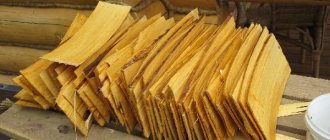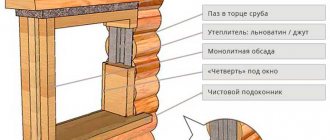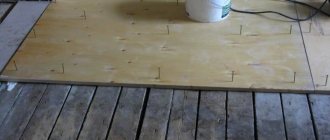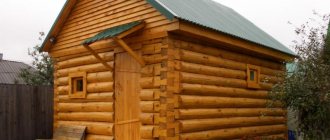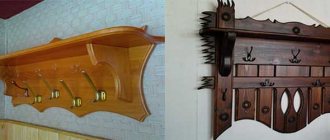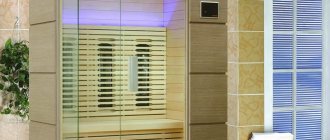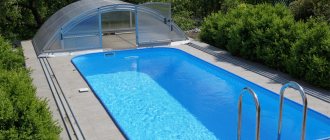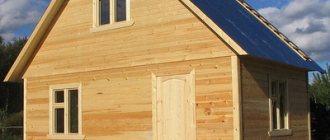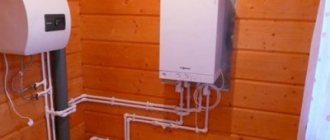Not so long ago, a swimming pool was an attribute of luxury. Already today it is a traditional part of the exterior of quite a few houses outside the city and within the city. The modern market offers such structures in different shapes, sizes and designs. They differ in the type of device and installation method.
However, the pool has a unifying characteristic, which is expressed in the need for a ladder. This applies to both inflatable structures and permanent ones. Quite often today, home craftsmen make their own pool ladders. They have special requirements. For example, the descent should be comfortable and safe, as should the exit from the water. In addition, the staircase structure should also serve a decorative role. Therefore, it is necessary to think about the shape of the stairs at the stage of choosing a pool.
In order to avoid injury, it is important to ensure that the ladder - made of stainless steel or any other material - meets certain requirements. Among them, we should highlight the strength of the material, good illumination of the descent site at any time of the day, as well as anti-slip characteristics. If you do not plan to purchase a ladder for the pool, it is easy to make it yourself. Then it will have all the necessary parameters.
Requirements for pool stairs
The flight of stairs for the font was created with one purpose - to provide a convenient, safe entry and exit from the water. Decorative design is similarly an equally important link.
The structure acts as an element of the pool design. When making pool stairs, both of these factors are taken as a basis. In addition, the product has other requirements:
- Increased strength. The flight of stairs must withstand the weight of a person and not bend under him.
- Reliable fixation. The staircase is secured with flanges or embedded elements. The legs of stepladders must have rubber stops.
- Correct installation. The entrance is always located on the most illuminated side of the pool.
Stairs for children's and adult pools differ in size, which is due to the growth of vacationers. The structures are designed to carry a certain weight. These parameters must be taken into account if you are creating a project yourself.
Plastic analogues
The staircase to the pool can be constructed from a variety of materials. Plastic is an excellent alternative to more expensive options, which significantly reduces the overall cost of the entire structure.
Manufacturers offer a wide variety of models of plastic stairs. A wide selection of configurations and a loyal pricing policy provide everyone with the opportunity to purchase a plastic staircase structure. The low weight of the ladder allows it to be installed even on inflatable containers.
You can make a plastic ladder for a swimming pool yourself. To do this, you will need plastic pipes (you can even use leftovers). If desired, you can build a compact tabletop that will serve as a practical addition and a wonderful decoration for the pool.
What are stairs for outdoor pools made of?
Pool entrance elements are produced in production and made by hand. The place of manufacture often determines what material the structure is made of.
Wood is considered not the best material. Firstly, wood quickly disappears in damp conditions. Secondly, as the wood rots, the instability of the structure and the risk of the steps breaking increases. For these reasons, manufacturers do not use wood. This material is popular among those who like to do everything with their own hands. For the pool, attached flights of stairs with a platform are assembled.
Advice! To extend the service life of the structure, the wood is coated with protective impregnations, painted or varnished.
Stainless steel pipes or aluminum profiles are the best materials for stairs. All manufacturers use it. The finished product is durable, resistant to corrosion, looks aesthetically pleasing, and has a long service life. It is almost impossible to loosen such a ladder.
When assembling with their own hands, craftsmen often use ferrous metal pipes. Their disadvantage is their susceptibility to corrosion. Coloring only briefly slows down the process.
Polypropylene pipes are rarely used for making stairs. Plastic does not withstand heavy loads. This design can be assembled for a child for a children's pool. Sometimes metal rods are inserted inside the tubes for strength.
Most suitable materials
To make a high-quality and reliable ladder, you can use several types of materials. Typically stainless steel , polypropylene or aluminum are used.
Surely many swimming pool owners have thought about making a staircase from ordinary wood. After all, it is much easier than assembling metal structures. But this is not the most suitable option, because when the lumber interacts with water, it will simply be pushed upward, since wood has a much lower density.
In addition, wooden materials will rot fairly quickly if exposed to water. In just a few years, such a device can simply be thrown away and a new one built. But if there is a strong desire to make a staircase out of wood, then you can make an attached structure that will be a platform. To reduce the impact of water on the material, water-repellent paint can be applied to the surface. This option will help preserve the wooden staircase for a long time.
But it is worth noting that usually other materials are used to make the structure, which have more capabilities when interacting with water.
Use of stainless steel
This is the most common option for stairs. Stainless steel retains all its performance properties, even in humid conditions, and also has fairly high strength and can last for many years.
But, of course, stainless steel also has its disadvantages. Over time, a coating will form on the metal. The reason for this is insufficiently clean water, to which various impurities are added. It is for this reason that the product will have to be cleaned of this sediment. But it's not too big of a problem. The second inconvenience is the assembly process, since a metal staircase will have to be welded and then polished so that it has a beautiful and neat appearance. If you have never handled a welding machine before, then making a staircase from stainless steel is not the best option.
Homemade plastic
Plastic is a fairly inexpensive material , and therefore it is often used for the manufacture of such structures. Based on the mechanical properties of polypropylene, it can be understood that this type of material is inconvenient to process independently. The surface will suffer greatly and will look worn.
To create a similar structure at home from plastic, it is best to use unnecessary material. But it is worth noting that such a staircase will not have the most attractive appearance. There is an option to make a ladder from plastic tubes. To make the structure strong, iron reinforcement should be added inside. But this option is usually used exclusively for children's pools, since the ladder simply cannot support the weight of an adult. If you want to make a fairly durable structure, it is best to use stainless steel or a channel.
Pool ladder dimensions
For frame pools, double-sided stepladders are in demand. Before production begins, a drawing is drawn up indicating all dimensions. The parameters depend on the age for which the structure is designed. The step step for the stairs to the pool is 35-40 cm for an adult, 25 cm for children. The width of the structure remains the same for any age, from 50 to 70 cm. With these parameters, the stepladder is stable and allows you to move freely along it.
To determine the height of the stepladder, measure the distance from the bottom of the font to the top point of the side, add a margin of 30 to 40 cm. For optimal structural strength, you need to select the optimal size of the tubes. Their diameter cannot be less than 40 mm. The parameters of other additional elements are selected empirically. For example, handrails are adjusted to the height of people so that they can hold on comfortably. If desired, the stepladder can be equipped with a platform, the size of which depends on personal preferences.
What tools and materials will be needed
Before starting work you need to prepare:
- blanks for constructing a frame staircase (metal, wood, plastic);
- a set of tools – a hacksaw, a screwdriver, self-tapping screws;
- marking devices, tape measure.
There must be a sufficient number of reliable, durable fastenings. It is better to take them in reserve, since some may be damaged during work.
Materials are prepared in reserve so as not to purchase more during construction and installation
How to make a pool ladder with your own hands
After developing the project, you can begin manufacturing the structure. At this stage, you already need to decide on the material, calculate all the dimensions, and find a way to install it on the pool.
The video shows an example of a pool ladder:
Do-it-yourself pool ladder made of wood
Wood is considered one of the cheapest and most affordable materials. Wood lends itself well to processing and does not require welding. It is optimal to make a ladder for a frame pool with your own hands in the form of an attached stepladder with an upper platform. The height of an outdoor frame bathtub usually varies from 76 to 100 cm. Based on these parameters, material for assembly is prepared.
For supports, boards with a section of 50x120 mm are prepared. You can use timber. The steps are made from boards with a section of 30x120 mm. It is better to cut the platform yourself from moisture-resistant multi-layer plywood. To fix all the elements you will need self-tapping screws and mounting angles. A standard set of tools is prepared: saw, screwdriver, tape measure, grinder or sandpaper.
Assemble the stairs for the pool with a platform in the following order:
- Blanks are cut from the timber for the base of a flight of stairs. There should be two identical ones. One part of the march will stand near the pool, and the other will be in the water. The frame is assembled from blanks. Triangles cut from a board are attached to an inclined beam. The elements are placed strictly opposite each other to create parallel stringers.
- Blanks for steps are cut from the board. The parts are attached to the triangles of the stringers. Each element is reinforced with a mounting angle.
- When the two parts of the flight of stairs are ready, they are connected at the top with board overlays. Wide mounting angles are placed under them, because this is where the platform will be located, which will bear a large load.
- A fragment of the required size is cut out of plywood. It is usually made in a rectangular shape. The plywood is attached to the overlays. The site is ready.
- To ensure that the flight of stairs is stable and does not sink into the ground under the weight of a person, the lower part of the legs is connected by jumpers. They form a kind of emphasis on the ground and stiffening ribs.
- The finished structure is thoroughly polished. In places inaccessible to the grinder, use sandpaper. The wood is well impregnated with solutions that protect against fungus and moisture.
- Painting gives the product additional protection from moisture and aesthetics. To make the entrance to the pool look beautiful, the structure assembled by yourself is opened with varnish. You can use stain to highlight the natural beauty of wood.
The flight of stairs to the pool is ready. If desired, you can upgrade it yourself. If you sew up the sides on the outer part of the structure, then a niche is formed under the steps where equipment for caring for the pool is stored.
Do-it-yourself pool ladder from a stepladder
It’s easier not to make a metal ladder from scratch, but to remake a stepladder. The peculiarity of the design is that it already consists of two parts, and this is ideal for a frame outdoor pool. According to the standard, stepladders have steps made of 8 cm wide slats. They are comfortable for the foot and do not put pressure even when walking barefoot.
There are two ways to remake a stepladder with your own hands. If the walls of the pool are strong, make an extension ladder. The stepladder is cut to the required height at an angle of 25°, as shown in the photo. The cutting areas are sharp. To prevent them from damaging the walls of the pool, they are covered with homemade plugs cut from rubber 1 cm thick.
Advice! For plugs, it is optimal to use rubberized fabric.
The ladder is leaned against the bowl from the outside. To prevent it from moving, a depression of up to 20 cm is made under the legs. A similar structure can be leaned against from inside the pool. However, due to the lack of a groove at the bottom for support, it is capable of moving out.
The ladder will be more reliable if you remake the stepladder using the second method. If necessary, only the legs of the structure are shortened. For a stepladder installed over the side of the pool, its native platform should rise from the top of the fence by 30-40 cm. On the outside, under the legs, stops in the form of recesses are similarly made with your own hands. The upper handle of the stepladder in the shape of an arc is cut off. The cut area is covered with plugs.
The disadvantage of a stepladder is that there are steps on only one side. To get out of the pool, you will have to weld the steps yourself on the second side. The design is more complex, but more reliable in terms of stability.
DIY stainless steel pool ladder
If you have a welding machine and experience working with it, then the stairs to the pool can be welded in any configuration. It is better to take a stainless profile from the material. First, use a grinder to cut 4 long blanks for the stands. Two ladders of the same size are welded from them and lintels. They are connected at the top by two more jumpers to form a pyramid that resembles a stepladder when unfolded.
Arc-shaped handles are welded from pieces of round pipe and bends. Attach the handrails to the upper lintels. The area is sewn up with a rectangular sheet of corrugated iron. All welding joints are cleaned with a grinder or grinder. Rubber plugs are placed on the bottom of the legs to prevent damage to the bottom of the pool. If desired, the stainless steel structure can be painted.
Preparation
To work with stainless steel you will need the following materials and tools:
- drill;
- drill;
- Bulgarian;
- cutting discs;
- felt circle;
- nozzle;
- screwdriver;
- marker;
- hex wrench;
- level.
You can get rid of burrs and errors in the ends using a nozzle, while a felt wheel will help polish the surface. Additionally, you should purchase grinding paste. You can make a stainless steel pool ladder from pipes, the diameter of which varies from 16 to 50 mm. They will be needed to make handrails, racks and strings. Depending on the number of racks, you should prepare the required number of tips. You will need 6 x 40 mm self-tapping screws, as well as anchor bolts and nuts.
Features of manufacturing stairs for inflatable pools
Externally, ladders for inflatable bowls are similar to ordinary stepladders. One side of it rests on the ground from the outside, and the other inside the pool rests on the bottom. For children's shallow inflatable swimming pools, manufacturers sometimes provide stairs in the form of a slide. They are made in the same way as inflatable ones.
There are stairs for inflatable pools with removable plastic steps, a height adjustment mechanism, with or without railings, as well as with or without a platform.
If you are making a homemade ladder for an inflatable pool, then there should be no dangerous components on it that could damage the bowl. A design made of polypropylene pipes may be in demand here if the font is designed for children.
Making steps from concrete
The concrete staircase is installed after the pool bowl has been completed. The shape of the future staircase is created using metal reinforcement and plywood. It bends easily to take the desired shape. You can put together formwork for a future staircase from boards. After the frame is erected, the mold is poured. To prevent concrete from cracking in the heat, it is watered daily until the material dries completely.
How to install a ladder in a swimming pool
A special feature of the installation of a staircase entrance to the pool is the reliable fixation of the structure. This can be done with flanges or using embedded elements.
Flange mounting is unable to withstand heavy loads. This installation of stairs to the pool is suitable if children or non-obese people will walk on it. Flanges allow you to move the flight of stairs to another location if necessary.
To install it yourself, the ladder is leaned against the pool and placed in its permanent place. Flanges are placed on the legs, and drilling locations for mounting holes are marked. It is important here that there is a solid base, for example concrete or wood. Plastic dowels are inserted inside the holes, and the flanges are screwed with threaded stainless steel bolts.
The second do-it-yourself installation option is the most reliable and is suitable for all types of pools. Embedded elements (hooves) are used as fasteners. They are embedded in the concrete floor at the stage of pouring it. If this is not done, you will have to use a hammer drill to select recesses under the hooves. The mortgages are installed at the same level with the plane of the font's bypass path. After installing the ladder on the hooves, you first need to walk on it so that the structure is leveled and finds its place. Only then are the legs of the metal ladder welded to the embedded elements. The disadvantage of installation is the inability to move the structure to another location. If there is a strong need, it will have to be cut off and the hooves re-embedded in a new place.
Popular staircase models
The popularity of staircase models is determined by the choice of pool type. Staircase structures are:
- stationary;
- portable.
The most popular models of stairs are those with steps on both sides. The choice depends on the height of the side and its quality of the bowl. An important factor is also the method of attaching the ladder to the pool bowl. Thus, parts are installed to stationary water tanks during the construction stage, which will subsequently serve as steps for ease of movement. To ensure the maximum level of safety, special anti-slip rubberized pads are also installed.
How to strengthen a ladder for a frame pool
Most often, amplification requires steps. To do this, auxiliary angles or bars are placed at the junction of the support and the slats. For wooden stairs, grooves are cut out on the supports and steps are inserted into them. If the structure turns out to be shaky, additional jibs and spacers between the posts will provide strength.
Expert advice
The surface is cleaned with sandpaper. In order to improve the appearance of the product, it can be burned with a gas burner. This will make the wood texture more expressive. The boards are attached at the next stage using self-tapping screws; the final step is to apply varnish. It is worth remembering that wooden pool stairs, although quite simple to manufacture, are short-lived. When exposed to water, they quickly become unusable.
How to paint a pool ladder
When the assembly of the ladder for the frame pool is completed, it must be painted. Decorative treatment will protect the structure from the harmful effects of moisture and give it aesthetics.
To paint metal you need a zinc primer, a degreasing solution and paint. As the final material, it is optimal to use enamels in cylinders. In extreme cases, they can be applied with a spray gun. The metal surface is first rubbed with sandpaper and degreased with a solution. The next step is to apply primer. When it dries, cover all areas with paint in even layers.
Preparing for painting a wooden structure similarly begins with sanding with sandpaper. To protect the wood from grinder beetles, moisture, and mold, it is treated with an antiseptic. After drying, use varnish based on alcohol, alkyd, formaldehyde or nitrocellulose. Varnishes are transparent and colored. Choose at your own discretion. You can use clear varnish after pre-staining the wood. For application use a paint brush.
Installation recommendations
Making a ladder for the pool is half the battle. Next, you will need to select the correct location to install it. The place under the stairs should be well lit so as not to trip in the dark. It is advisable to additionally fix the part of the ladder that is not located in the pool to the ground. To do this, you can use metal pins and make loops on the ladder itself. The legs that are in the pool can pierce the canvas, so it is advisable to stick rubber pads on them. In wooden stairs, all self-tapping screws and nails should be well sunk into the wood and preferably covered with wood putty, as it is easy to cut yourself on them. Below is a video about the installation of the factory version:
Design Features
Stairs for swimming pools are very diverse, but in order to choose the right design that is needed, you should also take into account the shape of the pool bowl itself, its dimensions, and the requirements.
A pool ladder can take many different forms, but for the most part it depends on what the pool itself is like. All structures for launching into the water have steps that can follow each other not only in a straight line (traditional scheme), but also with turns, in a circle. For the pool you can make a staircase with flights of flights, a rotary one, a spiral one. For inflatable and children's ponds, you can install structures with slides for descent, which will be an excellent gift not only for kids, but also for their rather adult parents.
What exact form the staircase design will take must be determined before its construction. Let's consider the options for using a variety of schemes:
- It is recommended to equip non-buried pools with stairs that allow you to first climb onto the side, and only then go down into the water. In this case, the person turns his back to the water. Such a staircase is often made from metal pipes; it is easy to make with your own hands.
- For an in-ground pool, the so-called closed Roman staircase can be used, whose often rounded steps smoothly go into the water. The design of this design can be of two options: stationary, mounted together with the bottom of the bowl, and attached. Decorative ceramic mosaic tiles, special plastic, and reinforced with Kevlar thread are used for decoration. The first few steps, which are the highest, can simulate a sandbar where you can lie down. They are usually very wide; if the space is large, they can take up enough space for several people. If you install several nozzles, then such a top landing of a Roman staircase can easily turn into an excellent hydromassage bath.
- The second type of structure is an extension ladder, which is installed after the pool is completely ready. This is a pyramid of steps and handrails that you simply attach to the side with your own hands. Such ready-made structures are available in various shapes and sizes. These can be ladders for oval, round, rectangular bowls; they are placed at a depth of half a meter to one and a half meters. There is also the possibility of purchasing non-standard models.
- You can also install a therapeutic structure. This is the so-called balneological staircase. The stages of this design have special nozzles built into them that provide massage to the lumbar region.
- For frame, inflatable pools, you can install step ladders made in the shape of the letter “A” with your own hands. Such structures rest on one side on the ground, and the other on the bottom of the pool; they seem to go around the wall of the pool. They are made of metal and use tubes with an anti-slip surface.
- For inflatable pools, special inflatable slides can also be used. Most often they are used for children's and not very deep bowls.
Return to contents
Separate categories of descents
There are several types of descents into the pool, which differ significantly from the above “classic” types. By creating a swimming pool with their own hands with a platform and interesting accessories, every apartment owner wants to make the structure not only comfortable and safe, but also exclusive.
Perhaps the most interesting descent for swimming pools can be called balneological-type structures. Installing a ladder in a pool of this type will not be easy.
This is due to the fact that the design is supplemented with built-in nozzles. Their task: to massage the human lumbar and spinal ridge. They can be used for both therapeutic and preventive purposes, strengthening the health of swimmers.
It is also worth mentioning the slopes for children. They have more steps. They are much smaller than “adult” playgrounds. In addition, the design is always complemented by low railings, and the interval between steps is minimal.
Staircase to the second floor
Manufacturers began to create ready-made designs. The kit includes all stair parts. They only need to be assembled at home. This staircase is made from plastic pipes with your own hands according to the instructions. There are no particular difficulties in assembly.
You can also build the stairs to the second floor yourself. To do this, you need to purchase pipes with a round cross-section and fasteners for them (fittings). Some people still have parts of pipes from construction work. They too are coming into play. To increase the strength of the inter-floor staircase, it is mounted directly on the wall. Or, stepping back from the wall a few centimeters.
The workflow is as follows:
- Layout. This is the most basic and primary part of the work. A staircase made of a round pipe must be made according to a competent drawing. You can use a ready-made diagram and apply your own dimensions to it. If you are good at drawings, make the plan yourself.
- Assembly. The structure is assembled using fittings. The convenience of working with plastic also lies in the fact that you do not need to use glue, screws or other fasteners. First, the base is assembled, that is, the side parts. A mount is mounted on the wall to secure the finished pipes.
- The steps are cut from a pipe of the same size so that the stairs do not “move apart”. The distance between steps should be the same. It is calculated depending on the person's step. If only a child will walk on the structure, his step is taken into account.
- The ladder is attached to the wall after complete assembly. It is not convenient to do this alone. You can call an assistant.
- For interfloor systems, handrails or side rails are required. They are also made from plastic pipes. You can use metal for this case. Metal handrails are stronger.
The plastic pipe staircase to the second floor is ready! You can test and use it.
Conclusion
Whatever ladder you choose, it must be reliable and safe first and foremost. This staircase will be convenient and pleasant to use for many years. Even if it is stationary. By the way, a portable wooden or metal ladder, in winter, can serve as an excellent stand for flowers in the winter garden!
A do-it-yourself ladder for a frame pool is an excellent option for solving the problem of improving your artificial pond. Armed with simple materials and available tools, you can create an interesting and reliable design that will become not only a safe attribute for the pool, but also a real decoration of the site.
And what only craftsmen are capable of. If you only have the desire, even the most unrealistic idea can be brought to life. Take a closer look, maybe in our selection of such fantasies that have already come true, you will find that same staircase to a frame pool that will captivate you.
Master class on creating a wooden staircase
Typically, ladders for outdoor pools are factory-made from aluminum or austenitic alloys. Products made from these materials are light, beautiful and easy to install. You won’t be able to work with them yourself without special equipment, and you need a special skill.
In the absence of such, you can turn your attention to wood. Anyone can work with it. It is an ideal option as a material for stairs. Below are instructions that describe in detail how to make such a simple and convenient staircase structure for a frame pool.
We start, as always, with a drawing of the future staircase in order to accurately determine the amount of materials. Measure the height of the pool and calculate the parameters of the future design. The photo below shows our drawings with all dimensions.
Attention! If possible, you can design the stairs in a computer program.
Knowing all the dimensions, you can make simple calculations and purchase a certain footage of the base material.
For our design we will need boards measuring 100x50 mm of different lengths in the following quantities:
- 2 pcs. 450 mm long;
- 2 pcs. 1245 mm long;
- 2 pcs. 1422 mm long;
- 4 things. 1016 mm long;
- 2 pcs. 1346 mm long.
Sawing boards 100x25 mm. − 13 pcs. 1194 mm long. You will also need 6 bars measuring 250x50 mm and length 1232 mm.
In addition to the main material, you need:
- wood screws;
- screwdriver;
- jigsaw for cutting;
- wood grinder to remove roughness;
- dye;
- varnish
Attention! To make it more comfortable to walk along the steps, they can be lined with soft material, such as carpet. In this case, you will additionally need a furniture stapler with staples, and pieces of carpet of the required size with an allowance of 5-7 cm on all sides for hemming.
When all the materials have been collected and the boards have been cut to size, you can proceed directly to assembly, which will take no more than two hours.
The end result is a staircase that can be painted, varnished and used with pleasure.
Video in this article:
